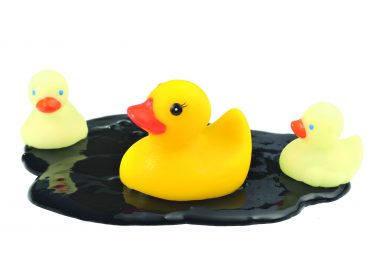Workplace spills: do you know what to do?
 Workplace spills, leaks and overflows are an unfortunate inevitability in many facilities. However, they pose potential danger to workers and to the environment. Thousands of workplace falls occur every year and can result in serious injury. In addition, depending on the liquid in question, environmental damage can be done by just a small amount of liquid seeping into storm drains and nearby waterways or ecosystems.
Workplace spills, leaks and overflows are an unfortunate inevitability in many facilities. However, they pose potential danger to workers and to the environment. Thousands of workplace falls occur every year and can result in serious injury. In addition, depending on the liquid in question, environmental damage can be done by just a small amount of liquid seeping into storm drains and nearby waterways or ecosystems.
Ensuring that workplace spills are monitored, contained and cleaned up is of paramount importance. Successful workplace spill clean-ups involve understanding the different types of spills that can occur, the best ways to contain those spills, and the products available to combat them.
Not all workplace spills are created equal
Many workplaces will use cardboard, rags or sawdust to clean up any and every spill. While cardboard and rags may be cheap and convenient, they are not the right choice for spills that are more than just a little rainwater tracked into a shop.
There are three main categories of workplace spills:
Chemical spills involve destructive substances such as acids and bases. These spills require special PPE for handling and clean-up, and they need specific sorbents that can tolerate corrosive chemicals. There is a wide range of chemical PPE available, ranging from chemical-resistant aprons to full body coveralls with boots and jackets. It is important to assess the effects of potential spills and clean-ups ahead of time so the correct PPE can be acquired.
Maintenance spills are water-based solvent and chemical spills. These are the most common spills and are non-aggressive. For these spills, water-absorbent materials and materials that contain cellulose are most useful.
Oil spills consist of hydrophobic hydrocarbons – these are usually leaks of butane, petrol and diesel. As the name suggests, these substances tend to avoid water, and clump together. Thankfully, there are specific products designed especially for oil spills.
Absorption or adsorption
You might not have realised there is a difference, but spill sorbents are made to either absorb or adsorb, and it is important to know the difference between the two, and what the various sorbents can do, before investing in spill control:
- Absorption is when a liquid can dissolve into the sorbent’s material. This means that the liquid molecules need to be small enough to seep into the sorbent. Cellulose-based sorbents tend to be very dense, and as a result, spills involving water will be better absorbed by cellulose. Oil spills are handled differently because oil molecules are larger than water molecules.
- Adsorption is when a liquid simply adheres to the surface of the material, rather than assimilate into the material. Sorbents that have greater surface area work better for oil spills, as there is more surface area for the liquid to adhere to.
Types of sorbents for workplace spills
Aside from the distinction between absorption and adsorption, there are many different types of sorbents to use for containing and cleaning spills. The sorbent product used can mean the difference between an efficient, effective spill clean-up and a lengthy and arduous clean-up that may leave residue behind.
- Socs are very versatile spill sorbents and an essential part of every spill kit. Sorbent socs are flexible and can fit around leaking machinery or problem areas to keep the rest of the facility floor clean and safe.
- Pillows are excellent sorbent tools and there are sorbent pillows specially designed for all three types of spills. Their maximal surface area makes them perfect for adsorption of spills, and their density provides great absorption properties.
- Pads are another sorbent spill staple for oil spills and maintenance spills. These convenient and easily-stowed sorbents are ideal for workshops and busy, spill-prone spaces.
- Rolls are effective against a range of industrial spills, including coolants, chemical, water, oil and solvent spills, and can be cut to match the volume of the spill. There are also oil-only and chemical-only sorbent rolls that are specially designed for their respective spills.
- Loose absorbents include a number of different sorbents, such as clay, pellet and special absorbent powders or granules. These loose absorbents can be sprinkled or poured onto problem leaks and spills – the liquids will be completely absorbed and the granules can then be swept away.
- Drain protection is key for containing spills and protecting workspaces and the environment. A number of products, such as PVC drain covers, can be used to effectively protect drains. These covers can be easily applied atop drains and once cleaned can be reused for future spills.
- Spill barriers are also effective for controlling and containing spills in facilities. These plastic barriers are flexible and can be shaped as needed to contain the spill. Once contained, the spill can be more effectively cleaned.
- Kits are essential where workplace spills occur, as they are packed with the necessary sorbents in one place. These kits are obviously best kept away from rainwater and moisture.
Having the appropriate sorbents on hand is only the beginning of effective spill control. However, together with a well-trained and diligent workforce, you can build an effective, safe and efficient spill control plan.
